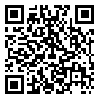BibTeX | RIS | EndNote | Medlars | ProCite | Reference Manager | RefWorks
Send citation to:
URL: http://irje.tums.ac.ir/article-1-5636-en.html
2- استادیار اقتصاد سلامت، مرکز تحقیقات مدلسازی در سلامت، پژوهشکده آینده پژوهی در سلامت، دانشگاه علوم پزشکی کرمان، کرمان، ایران
3- دانشیار مدیریت خدمات بهداشتی درمانی، مرکز تحقیقات عوامل اجتماعی موثر بر سلامت، پژوهشکده آینده پژوهی در سلامت، دانشگاه علوم پزشکی کرمان، کرمان، ایران
4- دکترای مدیریت استراتژیک، سازمان بیمه سلامت ایران، کرمان، ایران
5- دانشیار مدیریت خدمات بهداشتی درمانی، مرکز تحقیقات انفورماتیک پزشکی، پژوهشکده آینده پژوهی در سلامت، دانشگاه علوم پزشکی کرمان، کرمان، ایران ,
Background and Objectives: Health insurance would guarantee people security against disease and health problems. Given the key role of health insurance in achieving the goals of justice and reducing the out-of-pocket payment, this study aimed to evaluate the performance of Iran health insurance using the DEA model in 2014.
Methods: This was a cross sectional study. The study population included all Iran health insurance organizations. DEA input and output criteria were selected by targeted library and documentary review and the data were collected accordingly. The determinants of efficiency were evaluated using liner regression.
Results: The mean technical, management, and scale efficiency of Iran health insurance head offices was 0.593, 0.761, and 0.721, respectively. Considering the findings, the capacity of efficiency promotion at these head offices was approximately 41%. Regarding technical efficiency, 5 head offices had the maximum efficiency (1), 7 head offices had efficiency between 0.5 and 1, and 19 head offices had efficiency less than 0.5. In addition, the variables of population and total number of institutions had a significant impact on efficiency.
Conclusion: Based on defined variables, input oriented AP-DEA model was appropriate. The results showed a great capacity for increasing technical efficiency in the Iranian health insurance organizations which could be increased by benchmarking efficient and reference organizations and also adjusting their input. For this purpose, downsizing and agility of the Iranian health insurance organizations based on the e-government clause are proposed for administrative system reform.
Received: 2017/02/21 | Accepted: 2017/02/21 | Published: 2017/02/21
| Rights and permissions | |
 |
This work is licensed under a Creative Commons Attribution-NonCommercial 4.0 International License. |





